Horse diving began in the 1880s and became an extremely popular attraction for many decades, despite the apparent cruelty to animals and the dangers it posed.
According to Texas Escapes, horse diving was “invented” by a man named William “Doc” Carver. Carver had previously worked with Buffalo Bill Cody, but by the 1880s, he was traveling everywhere with his own Wild West show. Carver was an exceptionally skilled marksman, and his sharpshooting was the main attraction of the show, but after a while, he added a new promotional gimmick: horse diving.
It is believed that in 1881, Carver was building a bridge over the partially collapsed Platte River (Nebraska). His horse fell and dove into the water below, inspiring Carver to develop the sport of horse diving.
Carver trained various animals and participated in numerous performance shows. His son, Al Floyd Carver, constructed the diving platform and became the first athlete of this daring sport.
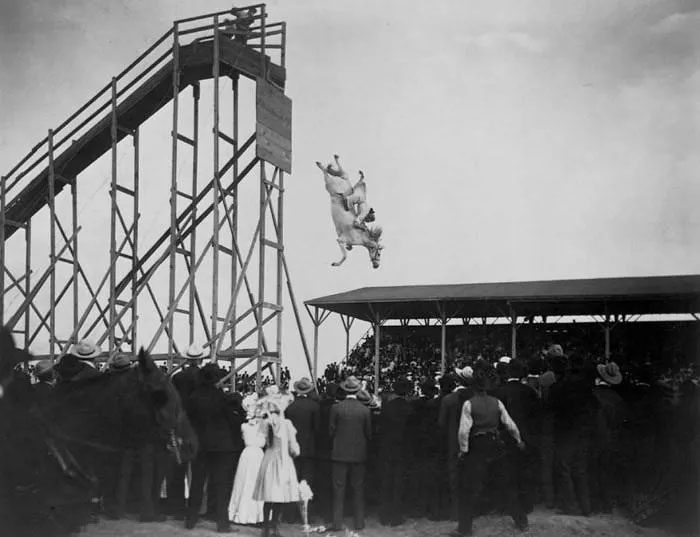
A study published in Animal Behavior Magazine states that if you are kind to horses, they can become your most loyal and enduring friends. This research also indicates that horses can understand human language more than we think. Their memory is quite good; they can remember human faces after long periods of separation and can recall commands for up to 10 years or longer.
One of William “Doc” Carver’s most famous shows, “The Great Carver Show”, became a major attraction at Steel Pier in Atlantic City, New Jersey. This unusual performance featured a horse with a young girl in a swimsuit on its back, jumping from a high platform into a pool of water below.
Horses participating in this sport must run up a carpeted ramp while the rider waits at the top, then leap on as the horse runs past to dive into the water below.
When the horses hit the water, they sink until their hooves touch the bottom and then push their bodies back to the surface. Divers are often trained with their horses for many years, gradually moving up to higher and more challenging diving platforms.
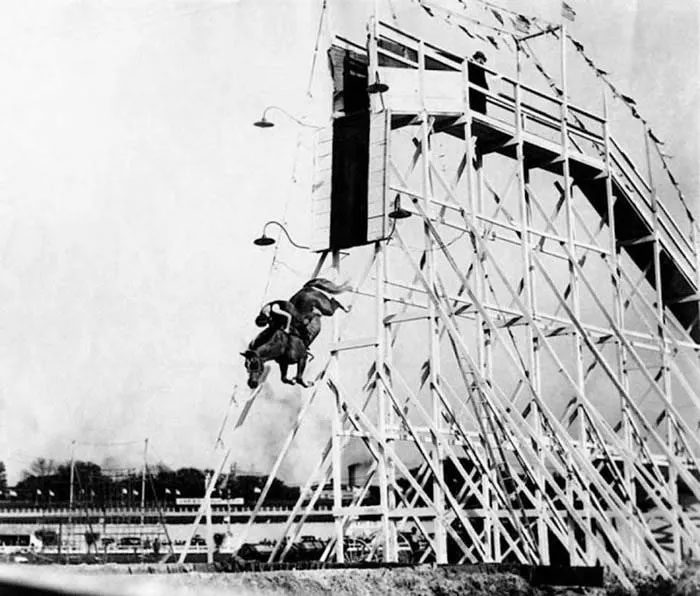
Like most mammals, horses can float in water but swim poorly. Due to their tall physique and small legs, horses cannot swim effectively. Additionally, they must keep their heads high to prevent water from entering their ears, as the ears are the balance organs of the horse.
It is believed that throughout all the performances, there were no reported incidents of serious injuries to horses. However, the same cannot be said for the athletes.
On average, there are two injuries reported each year, typically fractures or bruises. The most severe injury in the history of the show occurred to Sonora Webster.
In 1931, during a dive, her horse crashed into the pool and lost its balance, causing its head to hit the water. Sonora could not close her eyes quickly enough compared to the speed of the horse’s fall, resulting in a detached retina that left her blind.
Despite her blindness, Sonora continued to participate in this daring sport for eleven more years. A film based on her life, Wild Hearts Can’t Be Broken, was released in 1991 and is based on her memoir, A Girl and Five Brave Horses.
Opposition from animal rights activists led to the end of horse diving performances in Atlantic City in the 1970s. Although there was a brief revival of the activity at the pier in 1993, it was once again shut down due to community protests.
In fact, to participate in this sport, horses would undergo hours of training with four dives into the water each day, consistently for seven days a week.
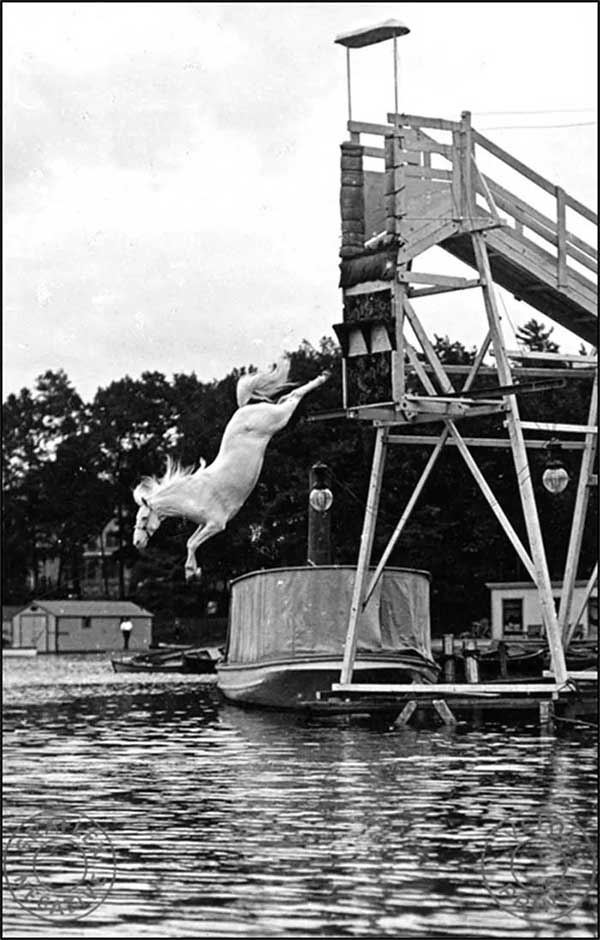
Most people consider horse diving to be cruel to animals. Throughout its history, many believe that trainers forced unwilling horses to dive using ropes, trap doors, and electric wires.
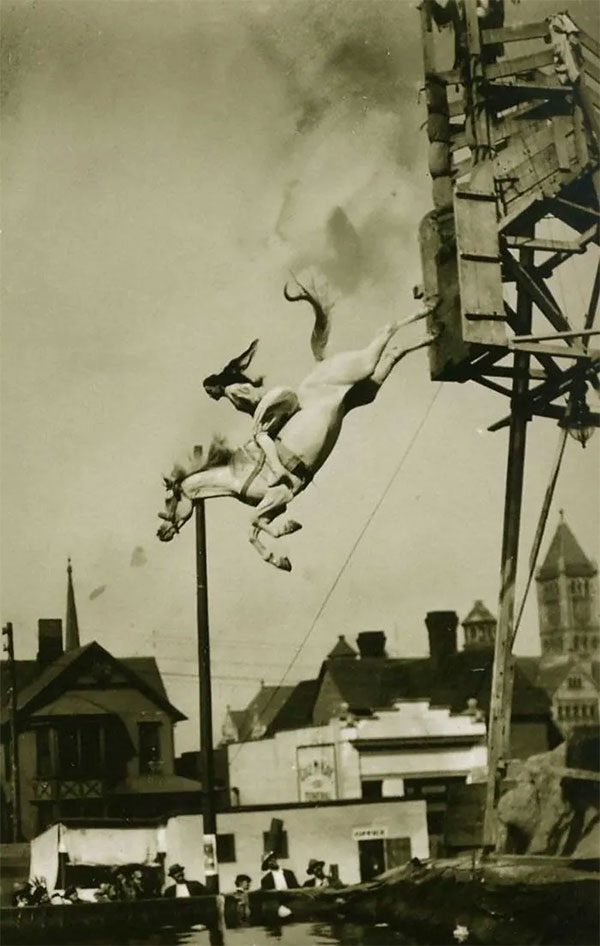
If we view this sport from an objective standpoint, diving is not a behavior that most horse species perform naturally. It is not something they evolved to do, as horses are entirely land-dwelling animals. Therefore, one could argue that training horses to dive goes against their nature and is entirely unethical.
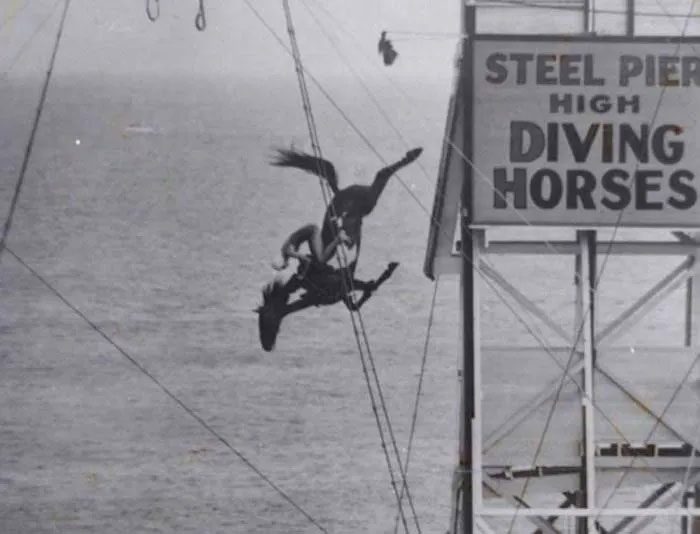
There are allegations that after the sporting careers of these horses ended, they were sent for slaughter. On the other hand, famous trainers and athletes claim that their horses are loved by many and enjoy what they are doing.
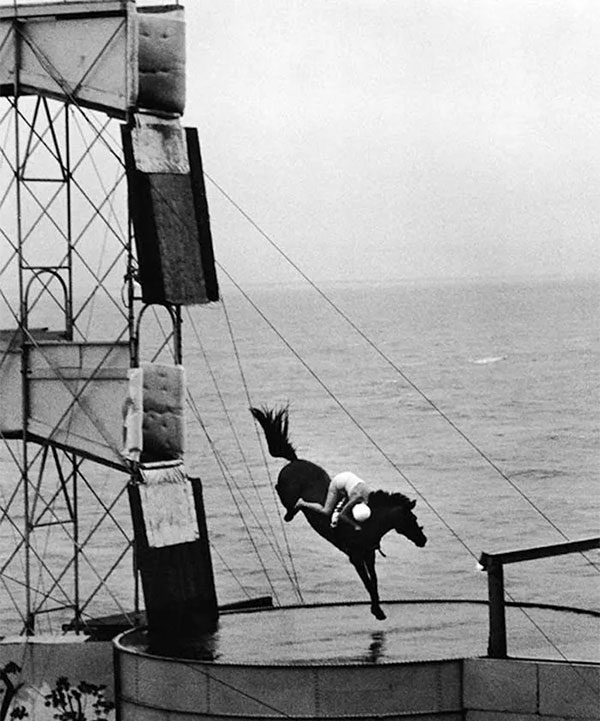
In the United States, horse diving is not illegal. The reason for the cessation of the activity is due to animal protection organizations lacking requirements and the enforcement of other laws.
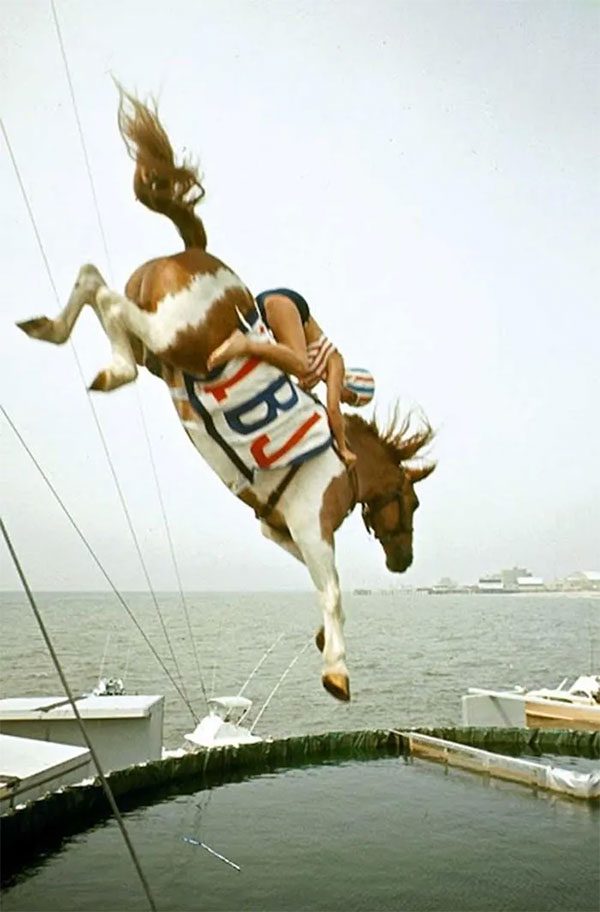
In her memoir, Sonora describes the thrill of sitting on a diving horse. “I could feel the horse’s muscles tense as its body sprung up and down, followed by a completely new sensation. It was a wild, almost primal feeling that could only be experienced when completely free. Then, I felt the water engulf me, and just after that, we were in the pool.”





















































